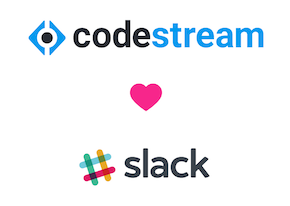

- SLACK MARK TEXT AS CODE HOW TO
- SLACK MARK TEXT AS CODE ANDROID
- SLACK MARK TEXT AS CODE CODE
- SLACK MARK TEXT AS CODE FREE
Google says this feature will be rolling out to everyone over the next 15 days, starting today. But this new change offers an easier way for users to visually use formatting. Notably, Google Chat has supported rich text for some time, using symbols such as asterisks (*) around words to indicate different types of formatting. The new formatting options include bold, underline, italics, strikethrough, and bulleted lists. The feature will live under a new formatting button in the text box that will pop out a handful of formatting options. Per an announcement on the company’s Workspace blog, Google Chat’s web app is rolling out rich text formatting to all users over the next 15 days. Starting today, Google Chat is making it easier to add rich text formatting to your messages on the web. After messing around a bit more with the API and trying to send the table as a file, I think its a difference with how slack uses the 't' character.
SLACK MARK TEXT AS CODE ANDROID
If, however, you are starting from scratch with your own spreadsheet, the script editor will be empty and you will need to follow the steps below to set things up.Google Chat, the company’s alternative to Slack and Microsoft Teams - not to be confused with the web app for its RCS and SMS messaging app on Android - is rolling out an overdue feature to its web app.
SLACK MARK TEXT AS CODE CODE
Note: If you copied the template spreadsheet above, all of the required code will already be in place (well, all apart from your webhook URL, which we’ll get to in step 4). Once your spreadsheet is ready, you need to access Google Apps Script. You want to get this data into a Slack alert. The spreadsheet contains a simple table listing fundraising revenue for the past month. Our dummy data is for a fictional charity.
SLACK MARK TEXT AS CODE FREE
For the purposes of this article, I have set up a simple Google spreadsheet with dummy data – feel free to make a copy of this spreadsheet (make sure you are logged into a Google account and then go to File > Make a copy), or alternatively use your own Google spreadsheet (either is fine). Now that you have set up your Slack App, you are ready to send it some data. Step 2: Fetch data from your spreadsheet using Google Apps Script. Happy days! Keep this browser tab open though, you’ll need to come back to it later. Your Slack App is now ready to start receiving data from an external service. Once you are ready to start sending alerts to a shared channel, set up a different webhook for that channel. This allows you to play around with how the Slack alert will appear and fix any presentation issues before you release your alert ‘in the wild’. Tip: While you are testing your Slack alert, I recommend you select a Slack channel that only you have access to. Toggle ‘Activate Incoming Webhooks’ to on, and then click the ‘Add New Webhook to Workspace’ button:įinally, select the Slack channel that you want the Slack alert to appear in and click ‘Allow’: From the left hand menu, select ‘Incoming Webhooks’: Without going into too much detail, a webhook is a mechanism that allows you to send information from an external service to your Slack App. It doesn’t do anything just yet though… you need to do one more thing to allow Google Apps Script to communicate with your App, and that’s to set up something called a ‘webhook’. Select your company’s development workspace (if you are only a member of one company, there should only be one option here), and hit ‘Create App’: To set up your new custom app, click on ‘Your Apps’ in the main nav:Ī modal will load, where you can provide a name for your App. Everything you need to know about the Slack API is here. To kick things off, make sure you are logged into your Slack account via your browser.

If you’re ready to get started, let’s go through each step in detail. If you don’t, go and check out the Google Apps Script docs first. Note: You’ll need some basic experience of Google Apps Script and/or JavaScript to understand everything in this article.


SLACK MARK TEXT AS CODE HOW TO
How to send Slack Alerts from Google Sheets / Google Apps Script. To do that, we use a few simple Google Apps Script functions, along with the Slack API. As a result, over the past few years, there have been several instances where we needed to get information out of our spreadsheets and into a Slack message. Slack works perfectly for both our internal communication (extremely useful during the home working/COVID-19 period) and as a way of connecting and sharing information quickly and transparently with our clients. In fact, there are seemingly endless possibilities.Īs a result, we run a lot of things through Google Sheets here at August. They have the ability to integrate with other Google Services, query external services via Add-Ons and APIs, share data between sheets, import data from around the web and much more. It’s fair to say, I’m a pretty big fan of Google Sheets and Apps Script.


 0 kommentar(er)
0 kommentar(er)
